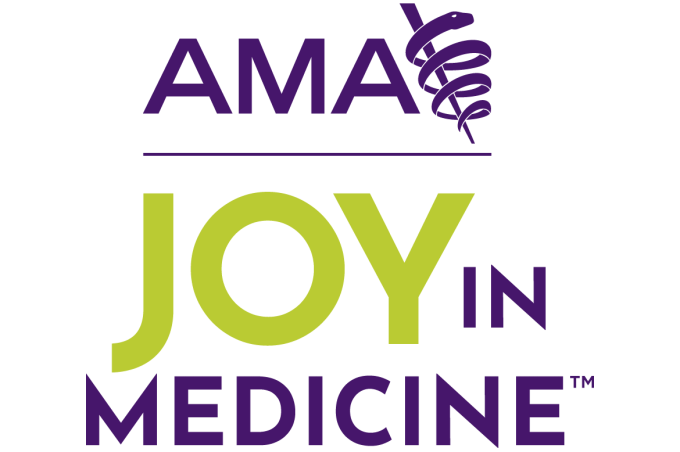Leaders at the Pennsylvania-based Geisinger health system saw an opportunity to provide better and more specific care for the 45,000 children coming to their emergency departments each year.
Nationally, more than 30 million children visit emergency departments each year. This represents about 20% of children in the U.S. But general emergency departments weren’t necessarily built for them, which is concerning since more than 97% of emergency departments caring for children are at nonchildren’s hospitals, according to research published in JAMA Network Open.
“The emergency medical system was originally designed for adult problems, such as heart attacks and strokes,” said Sarah Alander, MD, director of pediatric emergency medicine at Geisinger, which is a member of the AMA Health System Program that provides enterprise solutions to equip leadership, physicians and care teams with resources to help drive the future of medicine.
“Too often, children were being treated as little adults”” said Dr. Alander. “There are too many differences for this to work, between physiologic, developmental and disease process differences. You really have to have things set up for children with a pediatric consideration.”
That is why Dr. Alander and Megan Zelonis, RN, pediatric emergency care coordinator at Geisinger, set out in 2019 to adapt emergency departments to better support children’s unique health needs.
A landmark study issued that year “found that if an emergency room is trained and equipped to care for children, they are four times less likely to have a child die in their care,” Dr. Alander said.
To better care for children in emergency departments, Geisinger leaders created the Emergency Medical Services Children Council (EMSCC) led by Dr. Arlander. The council focuses on six areas to improve pediatric readiness:
- Developing action plans to prevent future errors
- Compiling a collection of policies and procedures for children.
- Working to standardize specialized equipment for the emergency care of children.
“In 2018, our system participated in the national pediatric readiness survey for the first time and had scores ranging from 40% to 68%,” said Zelonis. “In the repeat 2021 assessment, our scores significantly improved to a range of 83% to 94%.”
Putting guidance into practice
Geisinger’s Emergency Medical Services Children Council meets monthly. Teams from each of Geisinger’s locations participate in the council on a rotating basis.
In addition to the council, Geisinger health care teams regularly participate in simulation exercises to make sure each of their hospitals can best meet children’s needs, and to adjust when and where it is needed.
“The biggest benefit of our simulations is we find opportunities for us to improve,” Zelonis said. “It can start with something as small as a realizing a need to stock baby blankets, but also, we're seeing things such as bassinets and cribs and the right size equipment such as blood pressure cuffs.
“Things that might not be hardwired in our system yet, but now we know what to add and where,” she added. “Our big project now is to make sure we are hardwiring our locations for pediatric consideration.”
Simulations allow the hospitals to take the council’s guidance and put it into action in the specific context of their unique locations.
“It's not enough to just fill out a questionnaire and say, ‘We have all that,’” said Dr. Alander. “We doing simulations to make sure they have the right equipment that staff can locate in an emergency and know how and when to use it.”
“Every time we do simulations, we have that hospital redo the survey every time just to make sure we've got everything covered,” she said.
Growing dedicated peds areas
Geisinger originally didn’t have any dedicated areas in their emergency departments for pediatric cases—children were sharing rooms with adults. Since health care teams began addressing this need through a separate nine-bed pediatric zone in 2020, the volume of patients has grown 25% at that hospital, said Dr. Alander.
“These are nine hospitals that vary in services—one is a pediatric trauma center, two are adult level 1 trauma centers, we have a critical access hospital, and several are smaller community hospitals. And so, everybody had slightly different equipment,” she said. “Everybody had slightly different policies and procedures. Everybody had slightly different ways that they thought were the best ways.
That is why “we really do use the resources from EMSC to discover best practices,” Dr. Alander added, noting that “there has been a lot of consensuses and building opportunities in the tools that EMSC has offered.”
Looking to the future, Dr. Alander, Zelonis and their team are looking for practical ways to engage more Geisinger physicians and other health professionals in the pediatrics emergency department initiatives, and to be mindful of not overwhelming already busy doctors and staff.
“A lot of our success in our first survey was mainly due to nursing engagement and involvement in the survey, and really making sure that their EDs are up to the standards of the pediatric readiness initiative,” Zelonis said. “From a system perspective, our next steps are just making sure that our whole system is considering pediatric needs every day.”
Geisinger will soon roll out a pilot program where physicians from Geisinger EDs spend one day a month with the pediatric emergency physicians at the pediatric ED in Danville and then can take information and best practices back to their hospitals. The idea is to develop informed “physician champions” at each location,” Dr. Alander said.
“We wake up thinking about how our work today can fit into the pediatric readiness project,” said Dr. Alander. “The framework of this survey keeps us organized in our mission to continuously improve emergency care for the children entrusted to our care.”




